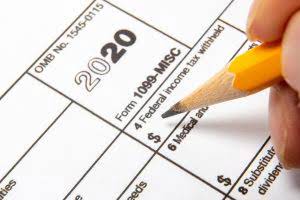
Beginning retained earnings are then included on the balance sheet for the following year. Retained earnings (RE) are calculated by taking the beginning balance of RE and adding net income (or loss) and then subtracting out any dividends paid. It is hard to know the increase in retained earnings for any given year unless one looks at the balance sheet for the previous period. The picture below shows that retained earnings increased by $40,000 ($120,000 – $80,000) from 2021 to 2021. Businesses can calculate their retained earnings using either historical cost or current cost accounting methods. It can demonstrate significant profitability and increased earnings to the analysts.
- For example, if a business generated a $30,000 profit over 2 years and then lost $10,000 over the 2 years after, the balance sheet in the 4th year would show a retained earnings total of $20,000.
- In the next accounting cycle, the RE ending balance from the previous accounting period will now become the retained earnings beginning balance.
- We can cross-check each of the formula figures used in the retained earnings calculation with the other financial statements.
- When this happens, the stock left over — which has suddenly become rarer — often increases in value.
Where to Find Retained Earnings in the Financial Statements

Investing in early-stage companies may be suitable for investors with a high tolerance for risk, but stay away if you are a very conservative investor. An unfunded commitment negative retained earnings is a futures contract to provide funding and is subject to certain conditions. Toxic debt is when loans or financial commitments become very damaging, for the borrower.
- It may be worth looking into other financial metrics to determine whether they are acting fiscally responsible.
- The retained earnings are calculated by adding net income to (or subtracting net losses from) the previous term’s retained earnings and then subtracting any net dividend(s) paid to the shareholders.
- In addition to this, many administering authorities treat dividend income as tax-free, hence many investors prefer dividends over capital/stock gains as such gains are taxable.
- On the other hand, new businesses usually spend several years working their way out of the debt it took to get started.
- Over 1.8 million professionals use CFI to learn accounting, financial analysis, modeling and more.
- These are the long term investors who seek periodic payments in the form of dividends as a return on the money invested by them in your company.
AccountingTools

A Certified Public Accountant (CPA) can take those taxing financial tasks off your plate and help you avoid costly mistakes, leaving you with peace of mind to take your startup to new heights. Here’s how to calculate gross, operating, and net profit margins and what they can tell you about your business. We’ll pair you with a bookkeeper to calculate your retained earnings for you so you’ll always be able to see where you’re at. For our retained earnings modeling exercise, the following assumptions will be used for our hypothetical company as of the last twelve months (LTM), or Year 0. Hence, capable management knows to properly balance these various options for the ultimate benefit of the company.
Negative Retained Earnings: Definition, Impacts, and Effects
Alternatively, the company paying large dividends that exceed the other figures can also lead to the retained earnings going negative. The retained earnings account is a component of the shareholder’s equity section of the balance sheet. This is a vital component of a company’s financial health and long-term viability, as it can provide the company with resources to fund growth, make investments in its operations, or pay off debts. It can also be an essential factor in a company’s creditworthiness, demonstrating its ability to generate profits and set them aside for future use. To understand negative retained earnings, it’s important to define retained earnings. Once your business pays all its taxes, expenses, and other debts owed each period – including your shareholders’ dividends, if applicable — the money left over is called retained earnings.
Are Retained Earnings a Type of Equity?
The disadvantage of retained earnings is that the retained earnings figure alone doesn’t provide any material information about the company. For instance, a company may declare a stock dividend of 10%, as per which the company would have to issue 0.10 shares for each share held by the existing stockholders. Thus, if you as a shareholder of the company owned 200 shares, you would own 20 additional shares, or a total of 220 (200 + (0.10 x 200)) shares once the company declares the stock dividend. In fact, both management and the investors would want to retain earnings if they are aware that the company has profitable investment opportunities. And, retaining profits would result in higher returns as compared to dividend payouts. As with many financial performance measurements, retained earnings calculations must be taken into context.
What Does It Mean for a Company to Have High Retained Earnings?
22 cos to be relegated to Z category for poor performance – Finance News: Latest Financial News, Finance News today in Bangladesh
22 cos to be relegated to Z category for poor performance.
Posted: Sun, 18 Feb 2024 08:00:00 GMT [source]
The beginning period retained earnings appear on the previous year’s balance sheet under the shareholder’s equity section. The beginning period retained earnings are thus the retained earnings of the previous year. Both cash and stock dividends lead to a decrease in the retained earnings of the company.

Stock Dividend Example
- Revenue, net profit, and retained earnings are terms frequently used on a company’s balance sheet, but it’s important to understand their differences.
- Retained earnings are reported under the shareholder equity section of the balance sheet while the statement of retained earnings outlines the changes in RE during the period.
- Accumulated losses over several periods or years could result in negative shareholders’ equity.
- A maturing company may not have many options or high-return projects for which to use the surplus cash, and it may prefer handing out dividends.
- First, make sure your income statement is correct with all expenses and revenues recorded accurately.
- Rather, they represent how the company has managed its profits (i.e. whether it has distributed them as dividends or reinvested them in the business).
- Shareholder equity represents the amount left over for shareholders if a company pays off all of its liabilities.
A company’s retained earnings balance can be found on the shareholder’s equity section of the balance sheet (one of the 3 core financial statements), which can be found in the company’s annual report or website. This figure can enter the red when accumulated net losses and dividends payouts exceed your previous profits. The main difference between retained earnings and profits is that retained earnings subtract dividend payments from a company’s profit, whereas profits do not. Where profits may indicate https://www.bookstime.com/articles/dental-bookkeeping that a company has positive net income, retained earnings may show that a company has a net loss depending on the amount of dividends it paid out to shareholders. On the other hand, though stock dividends do not lead to a cash outflow, the stock payment transfers part of the retained earnings to common stock. For instance, if a company pays one share as a dividend for each share held by the investors, the price per share will reduce to half because the number of shares will essentially double.
Increase revenue:
At the end of that period, the net income (or net loss) at that point is transferred from the Profit and Loss Account to the retained earnings account. If the balance of the retained earnings account is negative it may be called accumulated losses, retained losses or accumulated deficit, or similar terminology. Retained earnings refer to the money left over from a company’s profit after it pays direct and indirect costs, such as dividends and income taxes. So if a company earned $10,000 last year and $10,000 this year (after accounting for costs), its retained earnings are $20,000. Before calculating retained earnings, the first step is to find the retained earnings balance from a previous accounting period. Then add or subtract any net income or net loss for the new period and any dividends that were paid during the period.
No comment